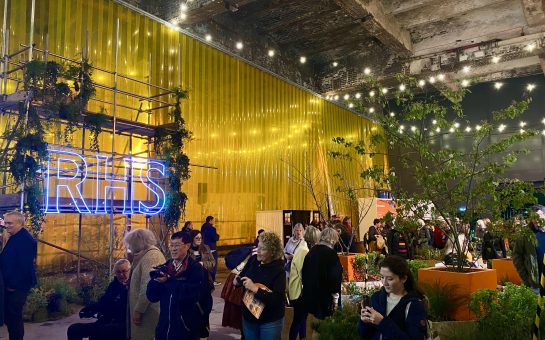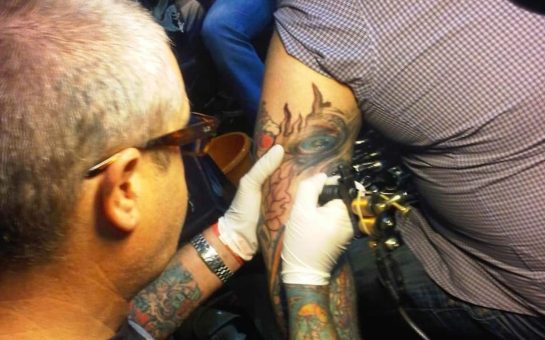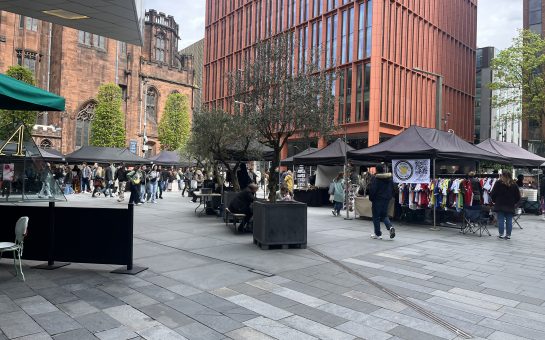Hands up. Who knew there was a rainforest in Manchester?
Me neither.
The Manchester Museum is home to a newly-refurbished rainforest vivarium, which has been made as natural as possible for its habitants.
Those habitants are part of the largest collection of tropical Costa Rican frogs in the world – outside Costa Rica, that is.
It is a collection that is overseen by Andrew Gray, Curator of Herpetology for the museum.
“I’ve been interested in animals since I was tiny,” he said.
“My mum used to check my pockets before I came into the house for insects or anything.”
He began to specialise in leaf frogs, which led him to Costa Rica.
“Costa Rica has more leaf frogs than anywhere in the world. It’s an amazing place. It’s where Central America meets North America so you get a crossover of animals.
“It’s a real mixing pot and it’s so diverse, more so than the Amazon in some places.”
The display at the museum brings a snippet of that diversity to Manchester and people do not seem to realise they are so close to it.
“We try to publicise it the best we can. I try to spread the word through my blog and the conservation work that we do.
“A lot of the publicity comes from word of mouth. People come and see what we have and we get amazing feedback, so word spreads.”
Along with the rainforest display, a deforestation display has recently been built, which aims to highlight the stark contrast between a rainforest full of life and one that has been torn to the ground.
Mr Gray said: “We have all got a responsibility to make sure kids know what is happening in the rainforest. We try to get the kids interested and show them a tiny little frog that they might never get to see again.
“It’s a snapshot of the Costa Rican rainforest and maybe one day they will want to do something about it.”
The deforestation display is bare in comparison to the rainforest display, which really does emphasise just how brutal the treatment of the rainforests can be. This is reinforced by how full of life the rainforest displays are.
Strawberry Poison-dart frogs, Golden Mantellas and Trinidadian Monkey frogs are just some of the animals that can be seen, along with all number of reptiles. Being able to see them so close up is a treat and is not something that can really be appreciated until you are face to face with them.
The display is also home to the Golden Poison-dart frog, which produces a poison so powerful it can kill 10 adult humans.
Throughout the vivarium runs a yellow line, which has the words ‘It all starts with you’ at the beginning. The line represents the idea that everything is connected.
Mr Gray said: “We show people what the animals can do to help us and what we can do to help the animals. We are all connected; we need to breathe the air that the rainforest produces.”
Great lengths have been gone to in the past to ensure the conservation of these frogs, with Mr Gray having travelled to Costa Rica about 30 times in the past 15 years. One expedition in particular sticks in his mind though.
“One that I would say was a highlight is when I went out and rediscovered a frog that was thought to be extinct.
“I was working in Monteverde and I heard a call that I didn’t recognise.
“I climbed the tree it was coming from and found a little tree frog. When I had it in my hand I realised it was a species that was thought to be extinct and had been for a couple of decades.”
It’s an incredible story and one that Mr Gray is rightly proud of.
“We went back a year later and found four of them but decided to leave them where they were,” he continued.
“I am a conservationist at heart and it’s a matter of weighing up the right way to conserve them, whether it’s through captive breeding, supporting them in the wild or raising awareness of their plight.”
The museum also runs an outreach programme that gets people of all ages involved, including those at Manchester Schools Hospital Service. Mr Gray fondly remembers one elderly visitor.
He said: “We had one guy who was in the war and when he saw the snakes we have, it brought back memories of being in the jungle.”
Local community groups and organisations are able to enjoy the educational, emotional and therapeutic benefits of being able to get up close to these animals.
Students at Manchester University also benefit from what the museum is able to offer. They get the opportunity to go on field courses in places like Ecuador and all first year biology and zoology students get the opportunity to have lessons with the animals.
It would appear as though more and more people are becoming aware of what this department of the museum has to offer.
“The amount of people coming has increased massively recently,” said Mr Gray.
“I think it’s because the museum has been enhanced over the last four to five years. I’ve been here 17 years and I’ve seen a huge change.
“People are loving the quality of what we have. We run ‘Big Saturdays’ every month, which are themed, and it’s always packed out. We are also running photography courses for adults in January.”
There is something for everyone at the vivarium. It’s doing an amazing job and is visually a beautiful place. The largest collection of tropical tree frogs outside of Costa Rica is on your doorstep and it absolutely worth seeing.
Mr Gray finished by saying: “The collection is not about the size, it’s about the quality of the work that we are doing. We do not want the largest collection, we want the most important collection and, from a conservation point of view, that’s what we’ve got.”
If you want to visit the Vivarium or Manchester Museum over the Christmas break, the Vivarium tours are available on Tuesdays and Thursdays and the museum is open 10am-5pm daily, excluding December 24-26 and January 1. Visit here for more information.
For more on this story and many others, follow Mancunian Matters on Twitter and Facebook.



